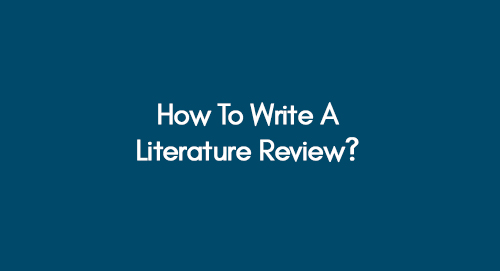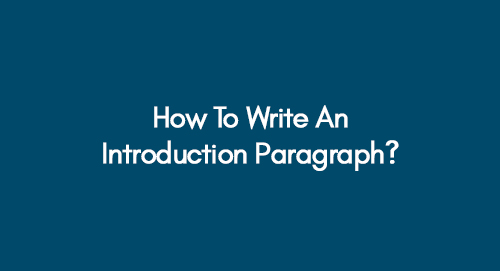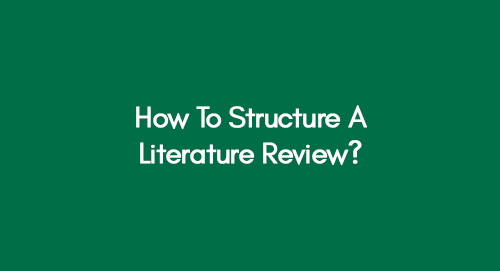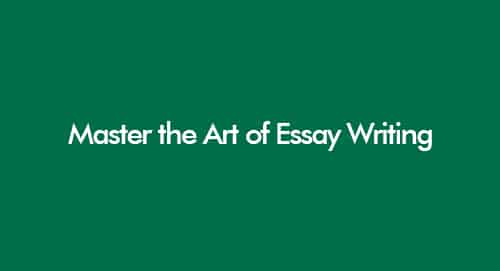
How to Write a Literature Review? | From Analysis to Synthesis
October 27, 2022
How to Write an Introduction Paragraph? | A Comprehensive Guide
October 27, 2022A literature review critically synthesises existing knowledge on a particular topic or domain. As an essential component of academic research, it provides a comprehensive and updated summary of relevant studies, theories, and methodologies. This article provides scholarly tips and professional techniques for how to structure a literature review in the easiest way.
Explore Current Dissertation Topics Here
Find More Examples of New Dissertation Topics Here
A literature review benefits researchers by comprehensively understanding existing knowledge, identifying research gaps, and developing a theoretical framework. It enhances critical thinking skills and contributes to the advancement of knowledge and research methodologies, adding credibility to scholarly work.
How to Structure a Literature Review Effectively?
Structuring a literature review in an expert manner involves employing effective techniques and adhering to a well-organized paragraph structure. Here are some tips and techniques to consider:
1- Introduction Paragraph
A literature review serves as a vital component of academic research, offering a comprehensive synthesis of existing knowledge within a specific domain. In this introductory section, it is important to provide a concise overview of the research topic, emphasizing its significance in the scholarly landscape. Additionally, clearly stating the literature review's objectives and purpose helps readers understand the study's specific goals.
2- Body Paragraphs
The body paragraphs of a literature review play a crucial role in structuring and organizing the available literature. Grouping and categorising the reviewed studies based on common themes, concepts, or methodologies is advisable to achieve this. This allows for a logical flow of ideas, and paragraphs can be organized thematically or chronologically to enhance the coherence of the review. Each body paragraph should commence with a topic sentence that introduces the main idea or argument to be discussed. Subsequently, providing critical analysis and synthesis of the literature is essential. This involves highlighting key findings, theories, or debates within the field and supporting claims with evidence derived from the reviewed studies.
3-Conclusion Paragraph
The concluding paragraph of a literature review serves to summarize the main findings and insights gained from the review process. It is important to highlight the significance of the reviewed studies in relation to the research topic. Additionally, addressing gaps or limitations within the existing literature helps identify areas requiring further investigation. Emphasizing the relevance and implications of the reviewed studies contributes to the overall understanding of the topic's importance and potential applications. Moreover, suggesting potential avenues for future research or areas that require further exploration provides valuable guidance for researchers and contributes to the advancement of knowledge within the field.
Learn How to Cite References Accurately Here
Explore Harvard Referencing Style Here
Remember that a literature review is not just a summary of other people's work; it is an analytical discussion of those works and how they contribute to our understanding of the topic under consideration. Therefore, every reference cited in the text must appear in the reference list.
How Can a SWOT Analysis Be Used in a Literature Review?
A SWOT analysis is a framework utilized to evaluate the Strengths, Weaknesses, Opportunities, and Threats that may be present in a given situation. This framework can be applied to businesses to assess different areas of the company and determine what may help or hinder their ability to achieve their goals.
SWOT analysis can also be used when conducting a literature review. This type of analysis can help you understand the different factors that may impact your research.
For example, if you are looking at research on a particular topic, a SWOT analysis can help you to identify any gaps in the existing research. Additionally, a SWOT analysis can help you understand what areas strengthen the research and which may represent weaknesses. This type of information can be helpful as you plan future research projects.
Explore More Expert Help on Literature Review Here
Incorporating a SWOT Analysis Into Your Literature Review
When incorporating a SWOT analysis into your literature review, it is important to keep the following things in mind:
- Be sure to identify the focus of your literature review. This will help you to know what factors to include in your SWOT analysis.
- Be sure to critically evaluate the sources that you are using for your literature review. Not all sources are created equal; using high-quality sources for your literature review is important.
- Make sure that your literature review flows well. A SWOT analysis can help identify different aspects of your topic, but it should not disrupt the flow of your paper.
- Finally, carefully proofread your paper before submitting it for grading.
What is Included in the Body Paragraphs of the Literature Review?
The following aspects must be included in your literature review:
- Discussion of the key findings of the literature.
- Critically evaluate the findings of the literature.
- Implications of the findings of the literature.
- Limitations of the studies reviewed.
- Discuss how the literature findings relate to your research question or topic of interest.
- Synthesize the findings of the studies reviewed.
- Provide a critical analysis of the studies reviewed.
- Place the findings of the studies reviewed in context.
- Offer a new interpretation of the findings of the studies reviewed.
- Suggest areas for further research on the topic under discussion.
Master your Literature Review by Following These Tips
1-Understand the Assignment
To effectively initiate the process of writing a literature review, it is essential to comprehend the assignment at hand fully. Take the time to grasp the purpose and objectives of the literature review before commencing the writing process. By doing so, you can align your efforts with the specific requirements and expectations of the assignment. Understanding the purpose of the literature review enables you to discern what you are expected to accomplish and the overall goal you are working towards.
2- Choose a Topic
After thoroughly understanding the assignment, the next step is to choose a topic for your literature review carefully. Selecting a topic that aligns with the specific course or discipline in which you are writing the review is crucial. By opting for a topic that is relevant to the course, you ensure that your literature review addresses key aspects of the subject matter.
3. Find Sources
Once you have determined your topic, the next step is to locate suitable sources. Begin by searching for sources that are directly relevant to your chosen topic. Utilize library databases, Google Scholar, or conduct a basic Google search to find potential references. However, exercise caution and critically evaluate each source before incorporating it into your literature review. Ensure that the sources are credible, reputable, and aligned with the scope and objectives of your review.
4. Take Notes
While going through your selected sources, it is crucial to take diligent notes. Take the time to jot down the key points and relevant details from each source that you come across. These notes should capture the main ideas, arguments, and supporting evidence presented in the literature. By maintaining comprehensive and well-organized notes, you will find it much easier to write your literature review. The process of note-taking ensures that you have a clear understanding of the material and allows for efficient referencing and citation when you later synthesize the information in your review.
5. Write your Paper
Once you have developed a well-structured outline, it is time to begin writing your literature review. Begin by introducing your chosen topic, providing essential contextual information to orient the reader. Subsequently, delve into a comprehensive discussion of the main points and findings derived from each of the selected sources. Present a clear synthesis of the key ideas, arguments, and empirical evidence presented in the literature.
- Find the Best Literature Review Writing Services Here
- Learn about Our Assignment Writing Services Here
Conclusion
A literature review is an overview of existing knowledge on a topic. It should be structured like any other essay, with an introduction, body paragraphs, and a conclusion. You can learn how to structure a literature review by following the above literature review tips.
Writing a literature review can be difficult, but with these guidelines, it doesn't have to be! If you need help along the way, don't hesitate to ask for assistance from your supervisor or a librarian or Contact Premier Dissertations to write a comprehensive literature review for your dissertation or research paper.
Explore the following resources to learn more about writing a literature review.
Get 3+ Free Dissertation Topics within 24 hours?




























